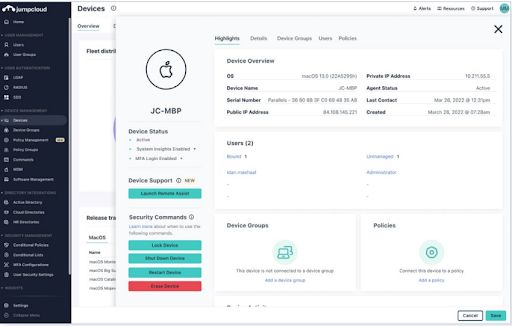The pandemic has completely changed the way we work. Whether you’ve moved back into the office or not, remote work has become the new normal and is here to stay. For IT teams who were used to providing only on-site support, they have had to find new and efficient ways to support their remote employees. However, no matter where they work, employees always expect a quick response for support from their colleagues in IT. Why? Even when working in the office, very little can be done if their technology is not functioning correctly. Failure to deliver efficient support can lead to employee frustration, loss of productivity, and may even impact the organization’s bottom line.
The Need for a Remote Assistance Solution
It can be challenging for IT admins to help their end users over the phone even though conferencing tools such as Zoom, Teams, or Webex are now ubiquitous. While they may make it easier to converse, they do not provide any inherent device management capabilities and so IT is reliant on the end user’s account of what is really going on. What a company really needs is a robust remote assistance solution that allows its IT team to connect remotely to an end user’s device so they can identify or assess the problem directly.
With a solution like this, if an end user is sitting at her computer she can invite her IT technician to see what is happening on her screen remotely when she encounters a technical problem; this can help ensure any miscommunication about the issue or its symptoms is avoided. By helping end users resolve their technical problems quickly with remote assistance, they can get back to work promptly and focus on more important business and tasks at hand.
In addition, it is not uncommon for many companies, including MSPs, to use heterogenous or free solutions that do not take into consideration the security aspect of keeping a company’s user and resource safe. Or purchasing expensive commercial point solutions that are completely siloed from user and device identity. Having multiple disparate solutions that do not sync with each other could create duplication of resources and effort for IT, leading to inefficiencies and mis-management.
The Problem with Existing Remote Assistance Solutions
Although remote assistance might be an answer to many IT help desk tickets, looking for a suitable remote assistance solution is not an easy task.
One of the main challenges is that many well-known remote assist solutions in the market are focused on Windows only. This is because they rely heavily on proprietary technology like Remote Desktop Protocol (RDP) and Virtual Network Computing (VNC). These protocols are not standard (or easily supported) with Mac and Linux devices, and often require relaxing firewall rules or setting up complex Virtual Private Network (VPN) tunneling to account for remote users. In addition, these solutions often require the use of heavy software clients on the admin’s system, which can keep technician’s tethered to their laptops when they are on call and thus hinder their mobility or flexibility to work from anywhere.
JumpCloud Remote Assist
JumpCloud will be extending its open directory platform capabilities with a native remote assistance solution in Fall 2022. JumpCloud Remote Assist will empower IT admins to easily connect to their end users’ Windows and macOS devices from anywhere, and in real-time, to resolve their technical problems.

Remote Assist will be launched under the Device Support section in the JumpCloud Admin Console.
Sneak Peek at JumpCloud Remote Assist Features
- Multi-OS Support: Deploy remote assistance to Windows, macOS and soon Linux user devices direct from your browser (support for Chrome, Edge, Firefox and Safari).
- Browser-based Admin Interface: Use the web browser directly, without relying on other systems or tools, to efficiently assist end users working from anywhere and at any time.
- Secure Peer-to-Peer Connection: Fully secured, private sessions protected by unique session keys, end-to-end encryption, and direct peer-to-peer communications.
Try JumpCloud Remote Assist for Free
JumpCloud Remote Assist is currently available to customers in our Early Access program. All JumpCloud organizations currently leveraging Device Management capabilities will have access to Remote Assist as a FREE addition for unlimited Windows, macOS, and Linux devices once it becomes generally available this Fall.




